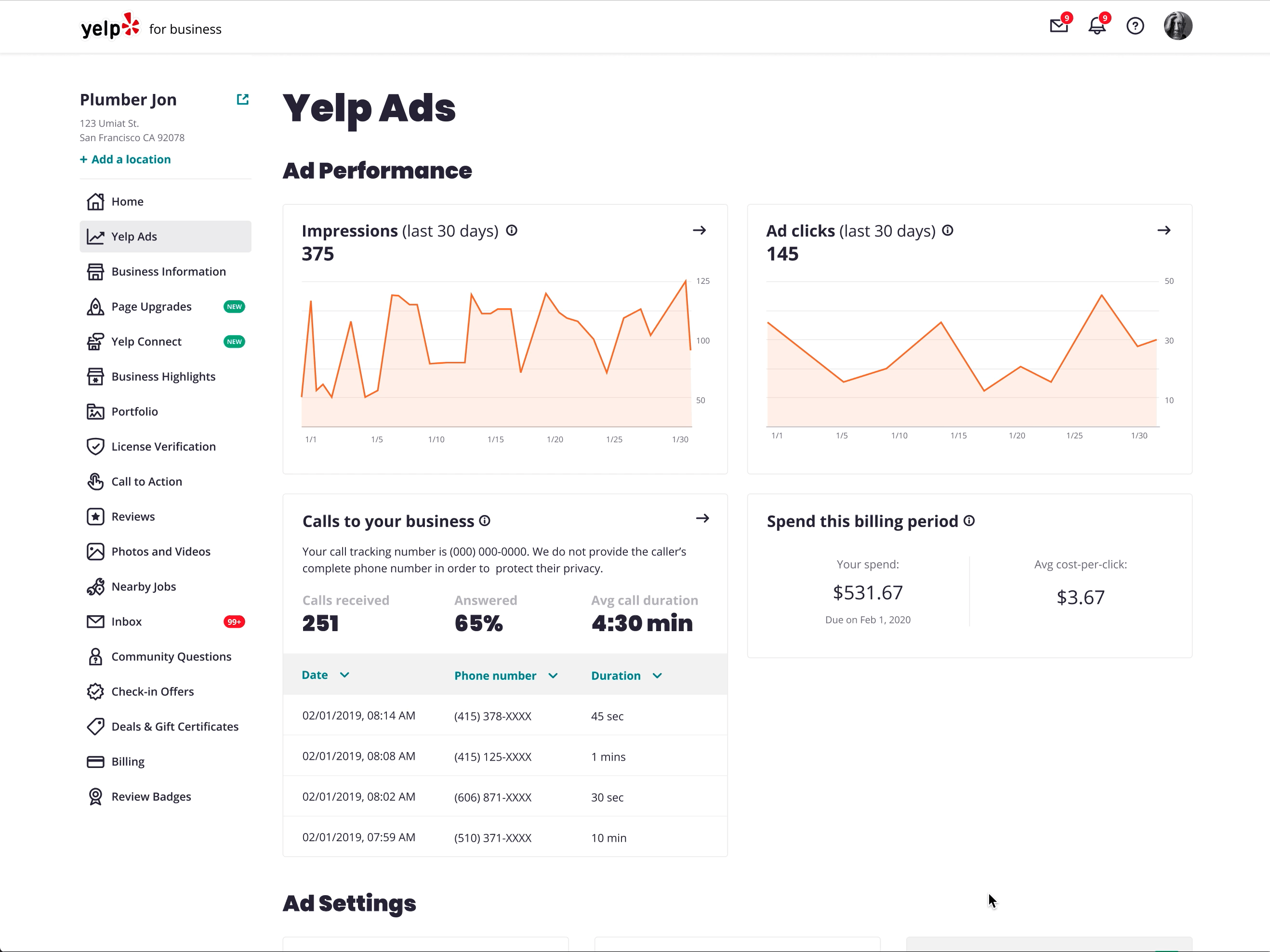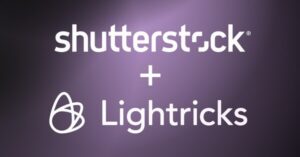Advertisers can now optimize for goals such as phone calls, website visits or messages, add negative keyword targeting and more.
Bringing ads and profile management together. The biggest change is the integration of the Ads Dashboard into Yelp for Business. Previously the Ads Dashboard and Yelp for Business were two separate tools. Yelp for Business is Yelp’s equivalent of Google My Business.
The integration of ads into profile management gives marketers on Yelp more visibility and control over their presence on the platform. The move is not unlike Facebook’s recent launch of Facebook Business Suite, which brings together ads, content and analytics for both Facebook and Instagram in a single dashboard.
The new Yelp Ads Dashboard

In addition to the integration of Ads Dashboard into Yelp for Business, the company also announced a number of new features and capabilities for ads:
- Ad goals: Yelp advertisers can establish whether they want to receive calls, site visits or messages. Yelp will optimize against the selected goal or optimize for ROI if no goal is selected.
- Keyword management: Yelp advertisers can select positive and negative keywords or topics. Negative keywords are now fully rolled out to be able to exclude keywords you don’t want to be found for — keeping budget from going to irrelevant queries.
- Audience Size Estimator: There’s a module on the dashboard that indicates potential audience size based on ad choices the business has made. If there are too few keywords, for example, the meter will indicate that the audience may be “limited,” prompting a suggested expansion of search terms.
Advertisers who choose to stop ad campaigns can now restart them with a single click. Yelp will save the previous campaign goals and budget settings. If or when advertisers what to resume, they can do so with one click rather than having to create a new campaign from scratch.
Yelp pointed out that a test earlier this showed that “by making this a simple, one click process for businesses, they were 14% more likely to restart their campaign.” That convenience is also good for Yelp’s own business.
Local ad reach heatmap

In the announcement, Yelp also teased some forthcoming features that help businesses visualize ad targeting and performance.
- Impression Heat Map: Using mobile location data, Yelp will show businesses where those who saw their ads “are concentrated” (read: live). This should help advertisers get smarter about geotargeting and perhaps with the advertising they provision on other channels.
- Leads Visualization: Another tool, Leads Visualization, is intended to help local advertisers (with a series of charts) better understand the volume of leads and the types of leads they’re getting on Yelp: “calls, messages, CTA clicks and website visits, and directions and map views.”
Why we care. Yelp remains an important site for its consumer influence, its ranking in search and its network, though it may be impacted by Apple’s new native reviews. Indeed, it’s under pressure on multiple fronts, especially when it comes to competition for ad spend. And many of Yelp’s reliable advertisers (i.e., restaurants) are suffering during COVID-19. The company said recently that 60% of restaurants, that had marked themselves closed in March, are now “permanently closed.”
In the midst of limited budgets and intensifying competition, Yelp must continuously innovate and simplify in order to attract and retain advertisers and organic business users. Accordingly, Yelp has been adding new free and paid promotional tools on a regular basis to stay one step ahead of Google My Business.
The inclusion of the Yelp Ads Dashboard into Yelp for Business makes sense from a business UX/UI perspective. It’s also a way to quickly expose many more small businesses to Yelp’s advertising capabilities.




